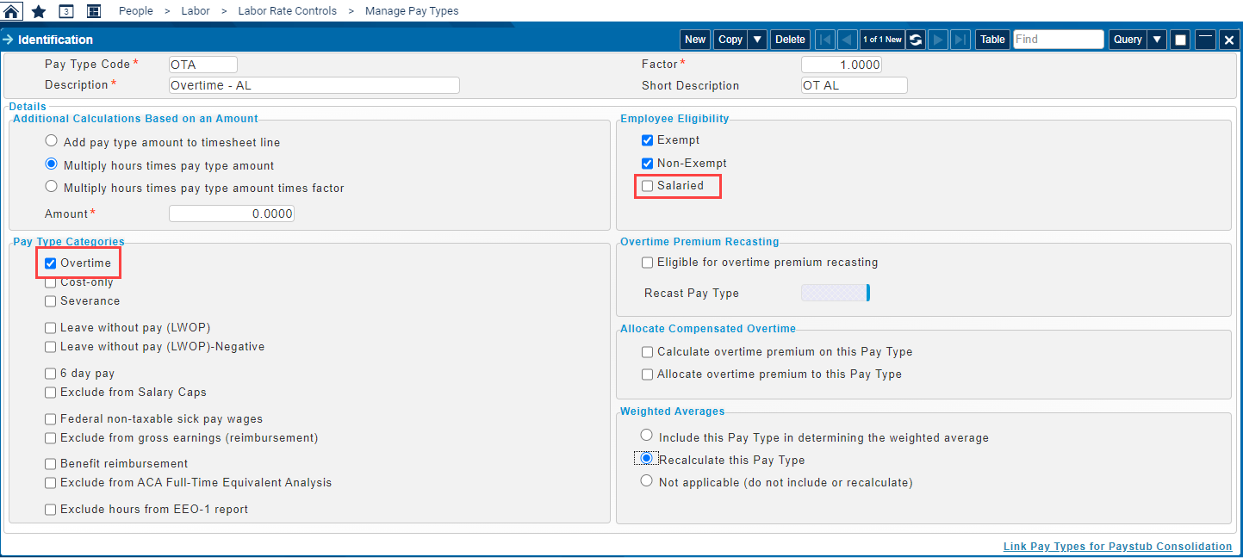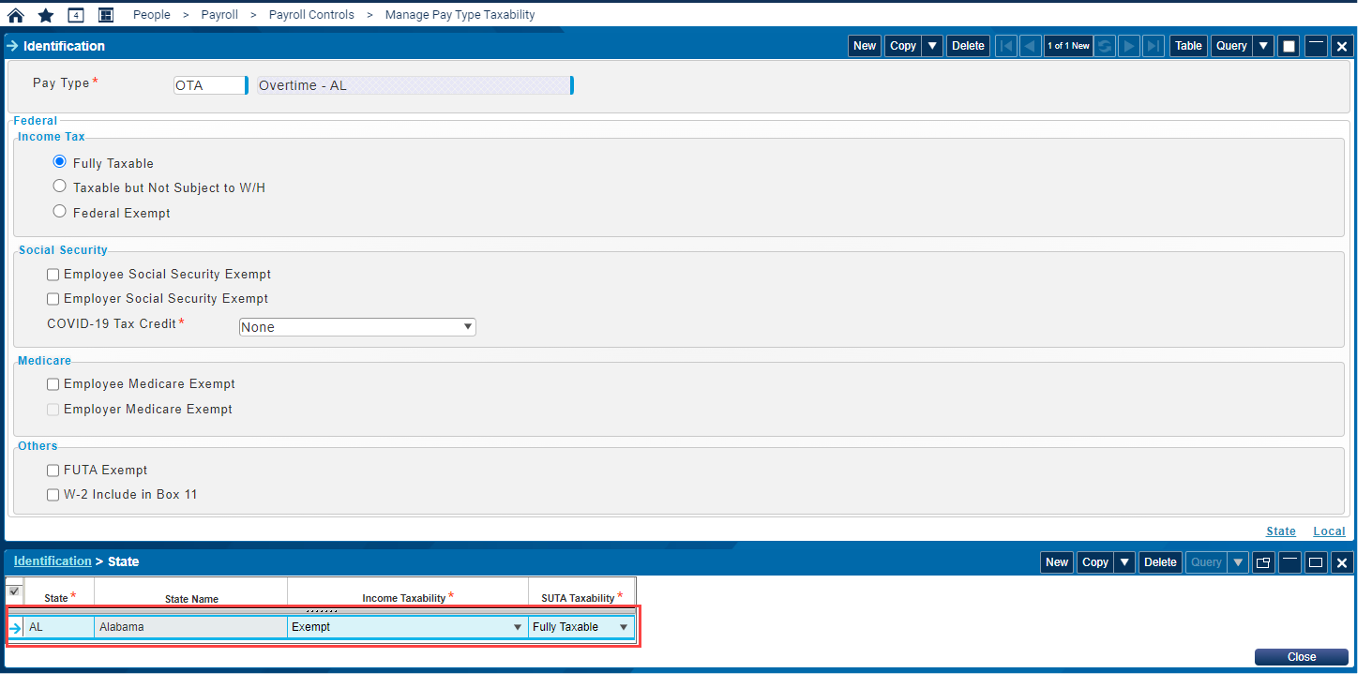
Do you have employees in Alabama? There are some changes to the overtime rules you need to be aware of for employers in Alabama.
Starting on January 1, 2024, and continuing until June 30, 2025, compensation earned by a full-time hourly wage-paid employee for hours worked beyond 40 during a workweek is exempt from Alabama state income tax. Additionally, there are updated reporting obligations for employers to fulfill with the Alabama Department of Revenue.
In accordance with ACT 2023-421 Alabama Overtime Pay Exemption, employers must report both the overall aggregate amount of overtime disbursed and the total count of employees who received overtime pay in the State of Alabama.
- A one-time report showing Historical 2023 Overtime Data was due by January 31, 2024, that required employers to report the aggregate amount of overtime paid during the 2023 calendar year and the total number of full-time hourly employees who received overtime pay in 2023.
- Beginning with the 2024 tax year, employers are required to report monthly and quarterly with the Form A-6 and Form A-1 withholding returns, respectively. Employers will need to report the following:
- Aggregate amount of overtime paid (new exempt portion) during the period (month/quarter)
- Total number of full-time hourly employees who received overtime pay.
You can find more information about the Department of Alabama’s reporting requirements here.
Costpoint has introduced new applications enabling employers to adhere to Alabama’s latest reporting requirements.
Print State Overtime Wages Report Screen
The recently introduced Print State Overtime Wages Report screen is designed to generate a summary of the total amount disbursed and the number of hourly employees who received overtime pay within a specified Taxable Entity, check date range, and Withholding State. You have the option to include a list of employees in the report. Currently, this report is specifically applicable to the State of Alabama.

If the check dates fall outside the range of January 1, 2024, to June 30, 2025, which is beyond the period covered by Alabama's temporary Overtime Pay Exemption, the overtime wages paid will be determined using only overtime pay types. Ensure that the Overtime checkbox for the relevant pay types is selected on the Manage Pay Types screen.
However, if the check dates fall within the effective period of Alabama's temporary Overtime Pay Exemption, the calculation of overtime wages will involve both overtime pay types and the taxability of overtime pay types. The necessary setup for this must be performed on the Manage Pay Types screen and the Manage Pay Type Taxability screen.
How to Set Up Alabama Overtime Pay Exemption
- On the Manage Pay Types screen, create a new pay type code to represent the Alabama Overtime Pay Exemption pay type.
- Select the Overtime checkbox under Pay Type Categories.
- Make sure the Salaried checkbox is cleared under Employee Eligibility.

- On the Manage Pay Type Taxability screen, create a new record for the Alabama Overtime Pay Exemption pay type.
- On the State subtask, create a new row, add Alabama and select Exempt from the Income Taxability drop-down.

Configuring your system as detailed above and utilizing the new reporting screen ensures that Costpoint not only keeps you in compliance with Alabama’s new requirements, but also contributes to streamlining payroll processes and boosting overall efficiency. In the face of evolving labor laws, a flexible and robust software solution like Costpoint proves to be a strategic advantage. Redstone Government Consulting has Costpoint and Human Resource experts that can help answer questions related to the new laws and applicable system setup; contact us if you need assistance!


 Mallory Spragins is a Senior Consultant in Redstone Government Consulting’s Costpoint Consulting Team, specializing in the Deltek Costpoint People and Time & Expense modules. She provides outsourced payroll support, Deltek Costpoint implementation and operation guidance, and employee training to government contractors. Since joining Redstone GCI, Mallory has become a trusted resource for Costpoint expertise in Labor, Leave, and Payroll, helping our clients navigate complex payroll processes with confidence. Her commitment to continuous learning is reflected in her achievement as a Certified Payroll Professional (CPP), further enhancing the value she brings to both our firm and clients. Mallory’s problem-solving skills, attention to detail, and client-focused approach make her an integral part of Redstone GCI’s team. Mallory has played a key role in providing expertise in system configuration, training, and process optimization in Deltek Costpoint’s People and Time & Expense areas. She specializes in the areas related to labor, leave, and payroll, as well as developing tailored training and instructional materials that enable employees, supervisors, and administrators to navigate Costpoint confidently. Her in-depth understanding of Deltek Costpoint’s Time and People modules strengthens collaboration between accounting, payroll, and HR departments. In addition, Mallory has over 15 years of experience in accounting, financial management, and operations, having spent much of her career in higher education administration before transitioning to government contracting. Before joining Redstone GCI, she worked in finance and operations at a major academic institution, managing financial processes, reconciliations, and multi-million-dollar budgets. She was responsible for account reconciliations, policy and procedure compliance, procurement, vendor management, and financial reporting in this role. She also led initiatives to improve operational efficiency, including implementing paperless workflows and optimizing financial data tracking. In addition to financial management, Mallory has extensive experience in training and personnel management, having hired, trained, and supervised professional staff and student employees throughout her career. Her expertise in payroll, budget forecasting, and financial system integrations makes her well-equipped to support Redstone GCI’s clients with Costpoint implementations and troubleshooting. Mallory’s strong technical background, hands-on financial experience, and client-focused approach make her a key contributor to Redstone GCI’s team, helping government contractors streamline their systems and maintain compliance with confidence.
Mallory Spragins is a Senior Consultant in Redstone Government Consulting’s Costpoint Consulting Team, specializing in the Deltek Costpoint People and Time & Expense modules. She provides outsourced payroll support, Deltek Costpoint implementation and operation guidance, and employee training to government contractors. Since joining Redstone GCI, Mallory has become a trusted resource for Costpoint expertise in Labor, Leave, and Payroll, helping our clients navigate complex payroll processes with confidence. Her commitment to continuous learning is reflected in her achievement as a Certified Payroll Professional (CPP), further enhancing the value she brings to both our firm and clients. Mallory’s problem-solving skills, attention to detail, and client-focused approach make her an integral part of Redstone GCI’s team. Mallory has played a key role in providing expertise in system configuration, training, and process optimization in Deltek Costpoint’s People and Time & Expense areas. She specializes in the areas related to labor, leave, and payroll, as well as developing tailored training and instructional materials that enable employees, supervisors, and administrators to navigate Costpoint confidently. Her in-depth understanding of Deltek Costpoint’s Time and People modules strengthens collaboration between accounting, payroll, and HR departments. In addition, Mallory has over 15 years of experience in accounting, financial management, and operations, having spent much of her career in higher education administration before transitioning to government contracting. Before joining Redstone GCI, she worked in finance and operations at a major academic institution, managing financial processes, reconciliations, and multi-million-dollar budgets. She was responsible for account reconciliations, policy and procedure compliance, procurement, vendor management, and financial reporting in this role. She also led initiatives to improve operational efficiency, including implementing paperless workflows and optimizing financial data tracking. In addition to financial management, Mallory has extensive experience in training and personnel management, having hired, trained, and supervised professional staff and student employees throughout her career. Her expertise in payroll, budget forecasting, and financial system integrations makes her well-equipped to support Redstone GCI’s clients with Costpoint implementations and troubleshooting. Mallory’s strong technical background, hands-on financial experience, and client-focused approach make her a key contributor to Redstone GCI’s team, helping government contractors streamline their systems and maintain compliance with confidence.